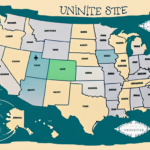Comparing Shipping Rates: Who Has Cheaper Rates, FedEx or UPS?
When it comes to shipping packages, cost is a major factor for businesses of all sizes. Two of the biggest shipping providers in the United States are FedEx and UPS, but which one offers the cheaper rates? In this article, we’ll break down the factors you should consider when comparing shipping rates between these two companies, so you can make an informed decision for your business needs.
Introduction: The Importance of Comparing Shipping Rates
Shipping costs can add up quickly, especially for businesses that frequently send packages. Comparing shipping rates is essential, as it enables you to identify the most cost-effective shipping provider for your specific needs. By taking the time to compare shipping rates, you can save your business a significant amount of money in the long run.
Another benefit of comparing shipping rates is that it allows you to evaluate the quality of service provided by different shipping companies. Some providers may offer lower rates but have a poor track record of delivering packages on time or handling them with care. By comparing rates and reading reviews from other customers, you can make an informed decision about which shipping provider to use.
In addition, comparing shipping rates can help you stay competitive in your industry. If your competitors are using a more cost-effective shipping provider, they may be able to offer lower prices to customers. By finding a more affordable shipping option, you can reduce your overhead costs and potentially lower your prices, making your business more attractive to customers.
Factors to Consider When Comparing Shipping Rates
There are several factors you should consider when comparing shipping rates between FedEx and UPS:
- The type of package you are shipping. Some items may require special handling or packaging, which can increase the shipping rate. For example, fragile items may require additional packaging materials to ensure safe delivery, which can add to the overall cost.
- Additional services or fees associated with your shipment. For example, if you require signature confirmation or insurance for your package, this may come with an additional fee. Be sure to factor in these costs when comparing shipping rates between FedEx and UPS.
Understanding the Differences Between FedEx and UPS
While both FedEx and UPS are similar in their delivery methods, there are a few key differences to note:
- Pricing structure. FedEx tends to have higher rates for express shipping, while UPS offers more competitive rates for ground shipping. This can make a significant difference for businesses that frequently ship large volumes of packages.
- Package delivery policies. FedEx requires a signature for all packages, while UPS offers the option to waive the signature requirement for certain deliveries. This can be a convenient option for customers who may not be available to sign for their packages during delivery.
Domestic Shipping Rates: FedEx vs. UPS
When it comes to shipping rates for domestic packages, both FedEx and UPS offer similar pricing structures. However, there are some differences to note:
- Both FedEx and UPS offer discounts for high-volume shippers. If you regularly ship a large number of packages, it may be worth looking into these discounts to save money on your shipping costs.
- Both companies offer online tools and resources to help you calculate shipping rates and track your packages, making it easy to manage your shipments from start to finish.
International Shipping Rates: FedEx vs. UPS
International shipping rates can vary significantly between FedEx and UPS, depending on the destination and package size and weight.
- Both FedEx and UPS offer insurance options for international shipments, which can provide peace of mind for valuable or fragile items. However, it is important to carefully review the terms and conditions of each company’s insurance policy to ensure that it meets your specific needs.
- Consider the environmental impact of international shipping. Both companies have made efforts to reduce their carbon footprint, but UPS has been recognized for its sustainability initiatives, including the use of alternative fuel vehicles and investments in renewable energy sources.
Express vs. Ground: Which is Cheaper?
When comparing express and ground shipping options for FedEx and UPS, there are some key factors to consider:
- The cost of shipping can vary depending on the weight and size of the package. For larger and heavier packages, ground shipping may be more expensive than express shipping. This is because ground shipping rates are based on the dimensional weight of the package, which takes into account both the weight and size of the package.
- The destination of the package. Express shipping may be more expensive for international destinations, while ground shipping may be more cost-effective for domestic shipments. It’s important to compare rates and delivery times for both options to determine which is the best choice for your specific shipping needs.
Packaging Options and Their Effect on Shipping Rates
The weight and size of your package can significantly affect your shipping rates. Using the most efficient and appropriate packaging for your products can help lower your shipping costs. Additionally, some packaging materials, such as oversized boxes and packing peanuts, can incur additional fees from shipping providers.
It is important to consider the fragility of your products when choosing packaging materials. Fragile items may require extra padding or cushioning to prevent damage during transit. This can also affect your shipping rates, as heavier or bulkier packaging materials may be necessary. However, investing in proper packaging can ultimately save you money by reducing the likelihood of damaged products and the need for costly returns or replacements.
Additional Fees: What You Need to Know About Surcharges and Hidden Costs
Both FedEx and UPS may charge additional fees on top of their standard shipping rates. These fees can include fuel surcharges, residential delivery fees, and additional handling fees for oversized or fragile packages. Make sure to read the fine print and understand these fees before selecting a shipping provider.
- These additional fees can add up quickly, especially for businesses that ship frequently. To avoid unexpected costs, consider negotiating a contract with your preferred shipping provider that includes a fixed rate for these surcharges and fees.
- The cost of international shipping. In addition to the standard fees and surcharges, international shipments may also be subject to customs duties and taxes. Make sure to research these additional costs and factor them into your shipping budget.
Comparing Transit Times: How Long Will Your Package Take to Arrive?
Transit times can vary depending on the shipping provider and delivery method. Both FedEx and UPS typically offer estimated delivery dates when you input your package details, so make sure to compare these transit times when determining which provider to use. In general, express shipping options will arrive more quickly than ground shipping.
It’s also important to consider the destination of your package when comparing transit times. If you’re shipping internationally, there may be additional customs and clearance processes that can add to the delivery time. Additionally, some remote or rural areas may have longer delivery times due to limited transportation options. Be sure to factor in these variables when selecting a shipping provider and delivery method.
Customer Service Comparison: How Do FedEx and UPS Stack Up?
Both FedEx and UPS prioritize customer service and offer various channels for support and issue resolution. However, FedEx is often regarded as having superior customer service in terms of responsiveness and resolution. UPS, on the other hand, offers more advanced tracking options.
- International shipping presence. FedEx has a stronger presence in Asia and Europe, while UPS has a stronger presence in Latin America. This can be a deciding factor for businesses that frequently ship to these regions.
- The cost of shipping. While both companies offer competitive rates, FedEx is often considered more expensive for small packages, while UPS may be more expensive for larger packages. It’s important to compare rates and services for your specific shipping needs.
Conclusion: Choosing the Right Shipping Provider for Your Business Needs
Choosing the right shipping provider can save your business money and improve your delivery experience. When comparing shipping rates between FedEx and UPS, consider the factors outlined in this article, including package weight and size, shipping distance, shipping speed, and delivery destination. Additionally, make sure to factor in any additional fees and consider the customer service experience offered by each provider.
It’s also important to consider the environmental impact of your shipping choices. Both FedEx and UPS offer eco-friendly shipping options, such as carbon-neutral shipping and the use of alternative fuels. By choosing a shipping provider that prioritizes sustainability, you can reduce your business’s carbon footprint and contribute to a healthier planet.






















